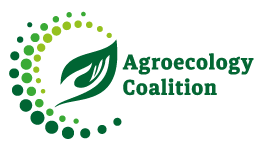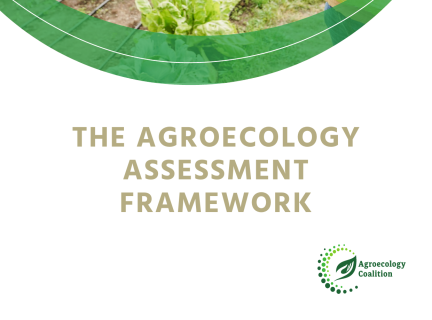How long is a piece of (agroecological) string? Beneath the obvious methodological and conceptual concerns about “measuring agroecology” are philosophical questions concerning acts of quantification and qualification. These speak to elementary aspects of how we as humans perceive, present and make the world in which we live with everyone else in the complex web of life. In the future I would like to devote more time to think about these underlying intellectual language games in order to underpin the development of the methodological framework, which has grown as a collective effort from the seeds sown in “Absent Agroecology Aid: On UK Agricultural Development Assistance Since 2010” [http://dx.doi.org/10.3390/su10020505] by Michel Pimbert and myself. See also “How to value and fund agroecological transformation“.
For now I am happy that we have published a paper, which explicates the method in the madness of measuring agroecology – here is the abstract:
“…Over the last few years, a small but increasing number of researchers and organizations has been involved in tracking funding flows to agroecology, analyzing development assistance, climate finance, and research funds for their contribution to an agroecological transformation of food systems, including as part of the efforts to achieve the Sustainable Development Goals. This has led to the emergence of a community of practice (CoP) meeting and exchanging in a number of different forums—Financing Agroecology Civil Society CoP, the Agroecology Donor Group, and the Working Group on Financing and Investments of the Coalition for Food Systems Transformation Through Agroecology (Agroecology Coalition). In this article, we report on a process of collaboratively developing a methodological framework, using the High Level Panel of Experts of the Committee on World Food Security 13 principles of agroecology as foundation. This framework overcomes some limitations of previous methodologies for evaluating degrees of agroecological integration (including those using Gliessman’s 5 levels of food system change) and facilitates a robust qualitative assessment of projects, programs, and project portfolios with respect to their “agroecologicalness.” The framework conceives of agroecology as paradigm-shifting rather than as incremental improvements to existing food systems. It enables global comparability as well as local contextualization of each principle. While the need for this framework arose from the desire to monitor—and increase—financial support for an urgently needed transformation toward agroecology, the framework can equally contribute to the design of projects and programs, which aim to radically transform food and farming systems. It also has value as an educational tool, in specifying through statements of value and concrete examples, what agroecological work aims at. This article introduces our framework and argues for an expanded CoP approach to use it widely and share the results through the digital platform that will be developed for that purpose…”.

We are also happy to have developed, in extension of my methodological work, a web-based ‘agroecology finance assessment tool‘ – under the auspices of the Agroecology Coalition – that can help evaluate projects/initiatives/calls for proposal for their support to agroecological transformations by rating their contribution to the implementation of each of the 13 principles of agroecology.
And then a little fodder from the machine for search engines to digest:
Measuring Agroecology: Delving into the Philosophical Quandaries of Quantification and the Quest for Holistic Understanding
Agroecology, a paradigm shift in agriculture, advocates for a harmonious coexistence between humans and nature, fostering resilience, biodiversity, and social equity. Yet, as we strive to quantify and evaluate its impact, we venture into a labyrinth of philosophical questions that challenge our fundamental assumptions about measuring the world.
The very act of measuring, whether it’s determining the length of a piece of string or assessing the efficacy of an agricultural system, involves dissecting the world into discrete units, breaking it down into parts and parcels. This seemingly innocuous process reflects a deeper human tendency to categorize, order, and control our surroundings.
However, agroecology, with its emphasis on interconnectedness and holistic perspectives, compels us to question the utility of such reductionist approaches. Can numbers alone capture the intricate relationships between plants, soil, and the broader ecosystem? Can they adequately reflect the social and cultural dimensions of food production?
The pursuit of accurately measuring agroecology necessitates a deeper engagement with its philosophical underpinnings. We must move beyond the confines of conventional metrics, which often prioritize yield and efficiency over long-term sustainability and social equity.
Instead, we must embrace a more nuanced understanding of agroecology, acknowledging its inherent complexity and the interconnectedness of its multiple dimensions. This requires a shift in our mindset, one that recognizes the limitations of simplistic quantification and embraces the richness of qualitative assessments.
The development of a robust methodology for measuring agroecology is an ongoing collaborative effort, bringing together researchers, practitioners, and policymakers from diverse disciplines. This collective endeavour aims to create a framework that transcends the limitations of previous approaches and captures the essence of agroecology’s transformative potential.
By acknowledging the philosophical complexities of measurement and embracing a holistic approach, we can forge a more effective path towards measuring agroecology. This journey will not only inform our evaluation of agroecological initiatives but also guide their design and implementation, ensuring that we truly transform our food systems for the benefit of both people and planet.
As we venture into this uncharted territory of measurement, we carry with us the wisdom of agroecology, its profound respect for the interconnectedness of all life. This guiding principle will enable us to measure the world not with a ruler or a scale, but with an understanding that transcends the boundaries of our current metrics.
Let us embrace the challenge of measuring agroecology not as a mere exercise in quantification, but as an opportunity to deepen our connection with the world around us, to unravel the intricate web of life, and to find new ways to measure the true value of our planet.


